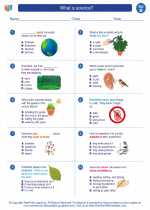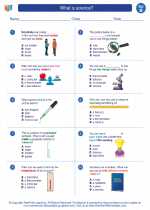Sound
Sound is a form of energy that is produced when an object vibrates. These vibrations create waves of pressure that travel through a medium, such as air, water, or solids. When these waves reach our ears, they cause our eardrums to vibrate, which our brains interpret as sound.
Properties of Sound
Sound has several properties, including:
- Frequency: The number of vibrations per second, which determines the pitch of the sound. Measured in hertz (Hz).
- Amplitude: The measure of the energy in a sound wave, which determines the loudness of the sound. Measured in decibels (dB).
- Wavelength: The distance between successive peaks of a sound wave, which affects the pitch of the sound.
- Speed: The speed at which sound waves travel through a medium, such as air or water. In air at room temperature, sound travels at approximately 343 meters per second.
How Sound Travels
Sound travels in the form of longitudinal waves, which means that the particles in the medium vibrate back and forth in the same direction that the sound wave is moving. When the waves reach a new medium, such as going from air into water, their speed and direction can change, causing the sound to be refracted or reflected.
Applications of Sound
Sound has many practical applications, including:
- Communication: Speech, music, and other forms of audio communication rely on the transmission and reception of sound waves.
- Medical Imaging: Techniques like ultrasound use sound waves to create images of internal organs and tissues.
- Sonar: Sound navigation and ranging systems use sound waves to detect and locate objects underwater.
- Music and Entertainment: Sound is used to create music, movies, and other forms of entertainment.
Study Guide
To study sound, consider focusing on the following topics:
- Definition and properties of sound
- How sound travels through different mediums
- Understanding the relationship between frequency, amplitude, and wavelength
- Real-life applications of sound in various fields
Additionally, conducting hands-on experiments, such as creating musical instruments or observing the behavior of sound waves, can provide a deeper understanding of the topic.
Remember to review the material regularly and practice identifying different properties of sound in everyday life to reinforce your understanding.
[Sound] Related Worksheets and Study Guides:
.◂Science Worksheets and Study Guides Second Grade. What is science?

 Worksheet/Answer key
Worksheet/Answer key
 Worksheet/Answer key
Worksheet/Answer key
 Worksheet/Answer key
Worksheet/Answer key
 Vocabulary/Answer key
Vocabulary/Answer key
